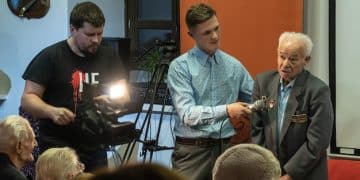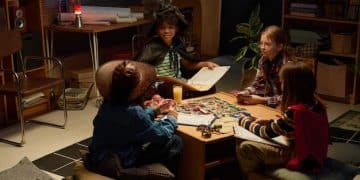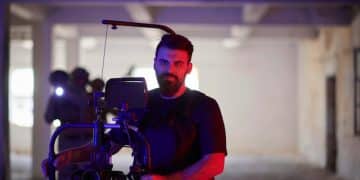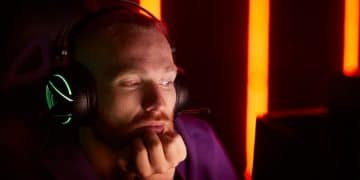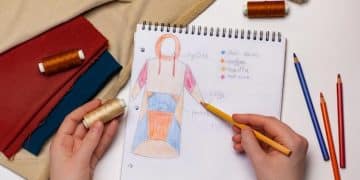The Choreographer’s Vision: Crafting Dance Narratives for Finale Episodes

The Choreographer’s Vision: Designing Dance Sequences That Tell a Story in Final Episodes involves carefully crafting movements, formations, and expressions to convey the narrative arc and emotional depth required for the culminating moments of a show, enhancing the storytelling through dynamic visual language.
The choreographer’s role in the final episodes of a show is pivotal, bringing together character arcs and plot threads through intricate dance sequences. The Choreographer’s Vision: Designing Dance Sequences That Tell a Story in Final Episodes requires a delicate balance of artistic expression and narrative coherence, enriching the concluding scenes with visually stunning storytelling.
Understanding the Choreographer’s Role in Finale Episodes
The choreographer’s responsibility extends far beyond simply creating dance moves when it comes to finale episodes. They become instrumental in translating the script’s emotional core into physical storytelling that captivates viewers. Understanding this crucial aspect is key to appreciating their work.
Finale episodes demand a nuanced approach, where each movement and formation serves a purpose beyond mere entertainment. The choreographer must work closely with the director and writers to ensure a cohesive and impactful final narrative.
The Choreographer as Storyteller
One of the primary roles of a choreographer is to tell a story through movement. In finale episodes, this storytelling becomes even more critical, as the dance sequences must reflect the culmination of character development and plot progression.
Consider how a choreographer might use a pas de deux to represent the reconciliation of two characters after a long-standing conflict, or a group dance to symbolize the community rallying together for a final stand. These are just a couple of examples.
Collaboration and Communication
Effective communication and collaboration are critical for success. The choreographer must work closely with the director, costume designer, set designer, and dancers to bring their vision to life.
- Director’s Input: Understanding the director’s overall vision for the episode is essential.
- Costume Considerations: The choice of costumes can greatly impact the dance’s aesthetic and meaning.
- Set Design Integration: The set can be used to enhance the dance, providing both physical and metaphorical context.
- Dancer Empowerment: The dancers’ interpretations and abilities also add depth to the choreography.
Ultimately, the choreographer’s role is to ensure that the dance sequences effectively complement and enhance the narrative of the finale episode, leaving a lasting impression on the audience. The choreography should not just be visually appealing, but also emotionally resonant.
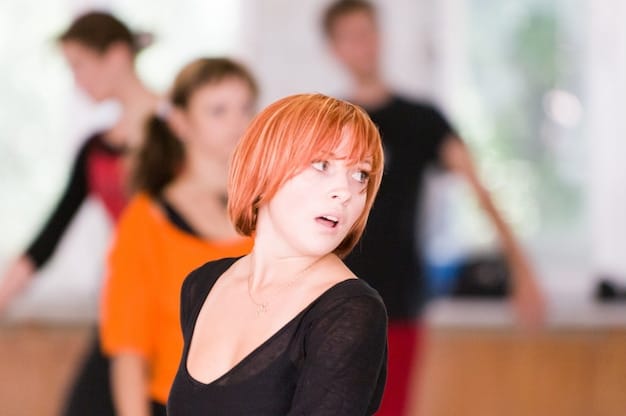
Key Elements of Dance Sequence Design
When designing dance sequences for finale episodes, several key elements come into play. The choreographer meticulously considers these factors to ensure that the dance effectively communicates the intended message and enhances the overall impact of the scene.
These essential elements include movement vocabulary, spatial design, rhythm and timing, and the emotional arc, all of which must align with the narrative and contribute to the episode’s climax.
Movement Vocabulary
The choice of movements is paramount. Different styles of dance can evoke different emotions and convey different messages.
For example, ballet might be used to express grace and elegance, while hip-hop could convey energy and rebellion. The choreographer must select movements that are appropriate for the characters, the storyline, and the overall tone of the finale.
Spatial Design and Formations
The arrangement of dancers in space can also be a powerful tool for storytelling. Formations can be used to create visual interest, emphasize certain characters, or symbolize relationships between characters.
- Symmetrical Formations: Can represent balance and harmony.
- Asymmetrical Formations: Can suggest conflict or tension.
- Circular Formations: Can symbolize unity and connection.
- Linear Formations: Can represent progression or a journey.
Careful spatial design ensures that the dance sequence is not only visually appealing but also contributes to the narrative depth of the finale episode. The way dancers move within the space creates dynamic and meaningful visuals.
Integrating Narrative into Movement
Successfully integrating narrative into movement is the cornerstone of effective choreography for finale episodes. The dance sequence should not exist as a standalone artistic expression but should be intricately woven into the plot, mirroring the characters’ journeys, conflicts, and resolutions.
This synchronization requires a deep understanding of the script, character motivations, and the overall thematic objectives of the series.
Reflecting Character Arcs
One of the most effective ways to integrate narrative into movement is to mirror the character arcs within the dance. The characters’ emotional journeys should be palpable through their movements and interactions.
For instance, a character who has grown in confidence throughout the series might display more assertive and expansive movements in the final episode’s dance sequence.
Symbolism and Metaphor
Symbolism and metaphor can add layers of meaning to the choreography, enriching the viewers’ understanding of the story.
- Recurring Motifs: Repeating certain movements or gestures can reinforce thematic elements.
- Costume Choices: The colors and styles of costumes can symbolize different aspects of the characters’ personalities or relationships.
- Props and Set Pieces: Using props and set pieces strategically can enhance the narrative impact of the dance.
The incorporation of symbolism and metaphor allows choreographers to communicate complex ideas and emotions in a non-verbal, yet deeply expressive manner. These layers add sophistication and resonance to the dance sequences.
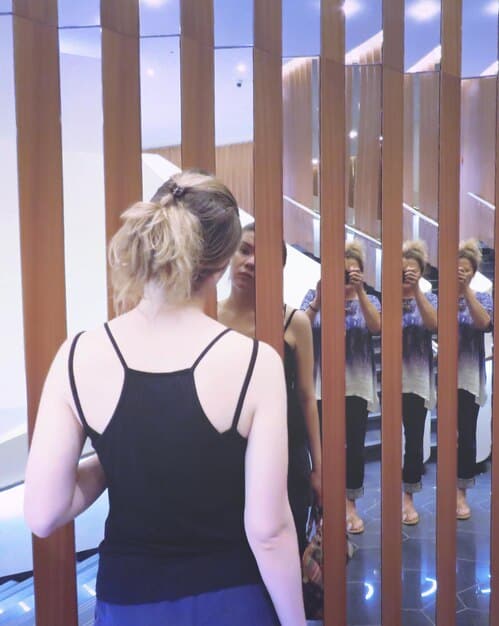
Working with Music and Sound Design
The synergy between dance, music, and sound design is crucial for creating an immersive and emotionally resonant experience in finale episodes. The choreographer must meticulously collaborate with the composer and sound designers to ensure a harmonious and impactful integration of these elements.
Music sets the tone and pace of the dance, while sound design adds depth and texture, enhancing the emotional narrative.
Music as a Driving Force
Music serves as the heartbeat of the dance, guiding the movements and setting the emotional tone.
The choreographer should work closely with the composer to select or create music that complements the narrative and enhances the impact of the dance sequence. The tempo, melody, and instrumentation should align with the emotions being conveyed.
Sound Design Enhancements
Sound design can add layers of depth and complexity to the dance, creating a richer and more immersive experience for the audience.
- Ambient Sounds: Adding subtle background noises can create a sense of realism or drama.
- Sound Effects: Strategic use of sound effects can highlight specific movements or moments in the dance.
- Silence: The deliberate use of silence can be a powerful tool for creating tension or emphasizing emotional impact.
Effective integration of music and sound design elevates the dance sequence, making it a more compelling and emotionally resonant part of the finale episode.
Challenges in Final Episode Choreography
Choreographing dance sequences for finale episodes presents numerous unique challenges. The stakes are higher, the expectations are greater, and the need for narrative coherence is paramount. Choreographers must navigate these challenges with creativity, precision, and a deep understanding of the story.
Some of the key challenges include time constraints, budget limitations, and the pressure to deliver a memorable and impactful finale.
Time and Budget Constraints
Time and budget constraints are common challenges in television production, and they can be particularly acute when choreographing dance sequences for finale episodes.
Choreographers must be resourceful and efficient, making the most of limited rehearsal time and resources. This often requires creative problem-solving and a willingness to adapt to changing circumstances.
Emotional Impact and Memorability
Finale episodes are often remembered for their emotional impact, and the dance sequences must contribute to this sense of closure and resolution.
The choreography must be carefully crafted to resonate with the audience and leave a lasting impression. This requires a deep understanding of the characters, the storyline, and the emotional arc of the series.
Maintaining Narrative Consistency
Ensuring that the dance sequences align with the overall narrative and thematic objectives of the series is essential. The choreography must be consistent with the characters’ personalities, their relationships, and their emotional journeys.
Any inconsistencies can detract from the impact of the finale episode and undermine the viewers’ emotional investment in the story.
Examples of Memorable Finale Choreography
Throughout television history, numerous finale episodes have featured memorable choreography that has left a lasting impression on viewers. These sequences often serve as the culmination of character arcs, plot lines, and emotional themes, enhancing the narrative impact of the episode.
One example is from the series “Dancing Through Life,” where the final dance merged all styles of dance into one.
“Dancing Through Life”: A Fusion of Styles
In this show’s finale, the final dance merged all styles of dance into one – celebrating a message of acceptance and unity.
- Emotional Symbolism: The final shot with the lead characters raising their arms symbolizes a final triumph.
- Costumes Reflect Growth: The costumes transitioned from darker hues to a lighter, optimistic range.
- Music and Movement: The track blends classical with new hip-hop beats.
The choreographer used colors to display a character’s development and the use of diverse dance forms was meant to show how the lead characters overcame their differences.
| Key Point | Brief Description |
|---|---|
| 🎬 Choreographer’s Role | Translates script’s emotions into physical storytelling. |
| 🎶 Music & Sound Synergy | Music guides movements; sound adds emotional depth. |
| 🎭 Reflecting Character Arcs | Mirrors characters’ journeys through dance. |
| 🎨 Spatial Design Importance | Uses dancer formations to enhance storytelling. |
FAQ
▼
The primary role is to translate the culmination of the show’s emotional and narrative arcs into visually stunning dance sequences. These sequences enrich storytelling and connect with the audience emotionally.
▼
Collaboration is crucial. Choreographers need to work closely with directors, costume designers, and composers to ensure the dance sequences enhance the narrative and align perfectly with the episode’s vision.
▼
Key elements include movement vocabulary, spatial design, rhythm, and the emotional arc. Each of those has to effectively communicating and enhancing the episode’s story and have the intended message.
▼
Music sets the dance’s tone and pace, while sound design adds depth. The combination creates an immersive emotional experience for the audience, making the dance sequence an integral part of the finale.
▼
Typical of these are time constraints, budget limitations, the need to create a memorable impact, and ensuring narrative consistency. However none of these can undermine the viewers’ investment in the story.
Conclusion
In summary, the choreographer’s vision: designing dance sequences that tell a story in final episodes is a blend of artistic expression, narrative understanding and collaboration. The choreographer ensures that dance sequences in the finale episode are not only visually appealing but also rich in storytelling and emotional depth, resonating with audiences and leaving a lasting impact.
